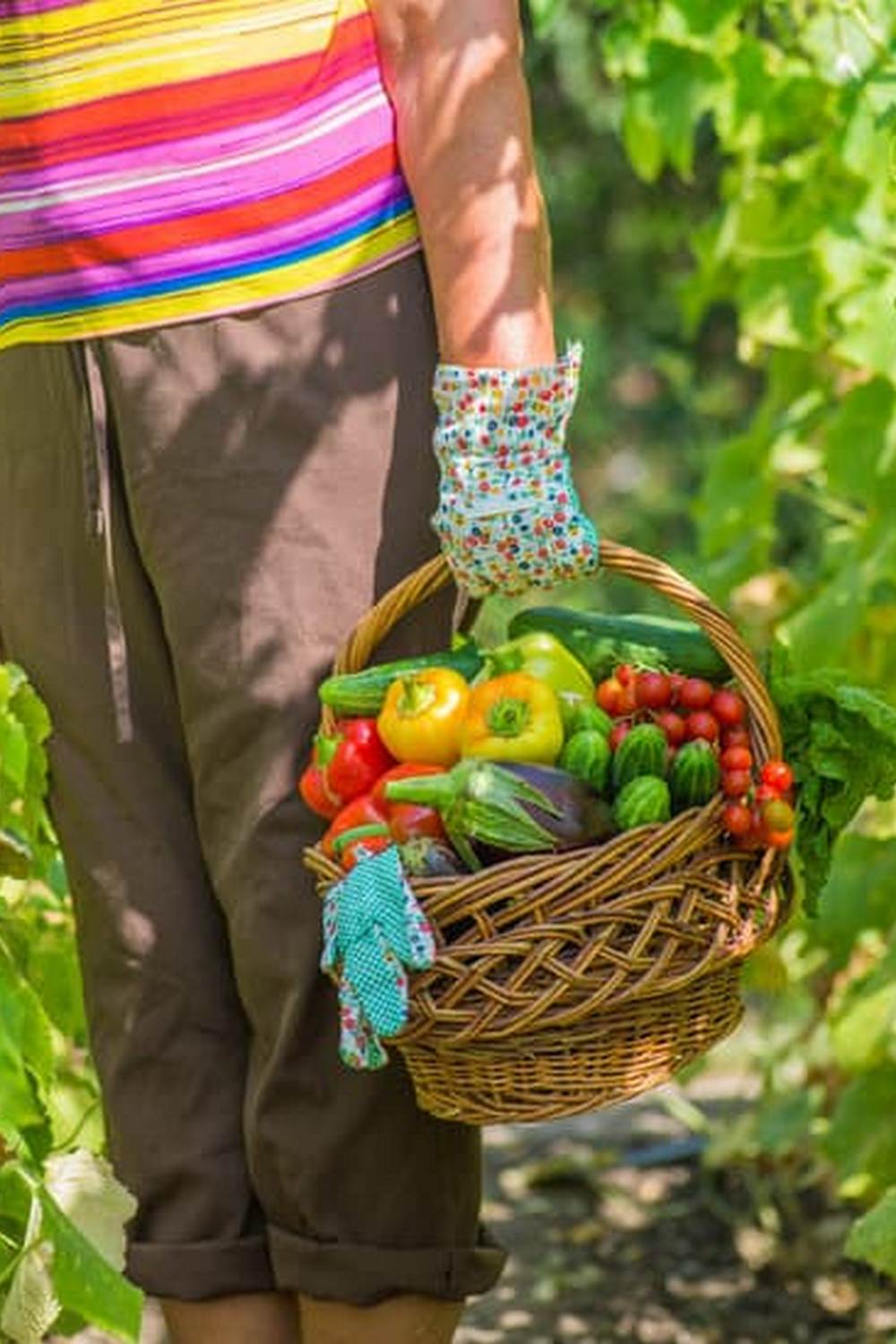Vegetable gardening styles offer a diverse range of options for cultivating your own produce right in your backyard. Whether you have limited space or want to maximize your yields, there is a style that suits your needs. From traditional row gardening to innovative vertical gardening, each method brings its benefits and unique charm to the table. In this article, we will explore various vegetable gardening styles that can help you create a thriving garden filled with fresh veggies.
Traditional row gardening is the classic method of planting vegetables in straight rows, allowing for easy access and maintenance. This style not only creates a neat and organized garden but also makes it simpler to keep track of your crops as they grow. On the other hand, square foot gardening offers a space-efficient approach by maximizing yields in a small area. This method focuses on dividing the growing space into square sections for optimal plant placement and productivity.
Raised bed gardening is another popular style that involves building elevated beds for cultivating vegetables with ease. These beds provide better soil drainage, warming up faster in the spring and extending the growing season. Container gardening is ideal for urban settings or limited spaces, allowing you to grow vegetables in pots and containers on balconies or patios.
Vertical gardening takes advantage of walls, trellises, and other structures to grow vegetables vertically, saving space and adding visual interest to your garden layout. Explore these different vegetable gardening styles to find the one that best suits your needs and preferences.
Square Foot Gardening
Benefits of Square Foot Gardening
One of the main advantages of Square Foot Gardening is its space efficiency. With this method, gardeners can grow more food in less space compared to traditional row gardening. The close planting arrangement also helps to conserve water and reduce weed growth, as the dense foliage shades out competing plants. Additionally, the structured layout makes it easier to manage and maintain the garden bed, leading to higher yields with less effort.
How to Implement Square Foot Gardening
To start square foot gardening, you will need a raised bed filled with a nutrient-rich growing medium that drains well. Divide the bed into one-foot squares either using physical dividers or creating imaginary lines. Each type of vegetable will have a designated number of squares for planting based on its size and spacing needs.
Plant seeds or transplants according to the guidelines specific to each crop, ensuring proper spacing and care throughout the growing season. Regular maintenance such as watering, weeding, and harvesting will help ensure a bountiful harvest from your square foot garden.
Raised Bed Gardening
To get started with raised bed gardening, follow these simple steps:
- Choose a location: Select a sunny spot in your garden that receives at least 6-8 hours of sunlight per day. Make sure the area is level and easily accessible for watering and maintenance.
- Build the frame: Construct a rectangular or square frame using materials such as wood, metal, or composite boards. The height of the bed can vary depending on your preference, but aim for at least 12-18 inches to provide ample root space for your vegetables.
- Fill with soil: Fill the raised bed with a combination of topsoil, compost, and organic matter to create a nutrient-rich growing environment for your plants. Avoid using regular garden soil as it may not provide adequate drainage or nutrients.
Maintaining raised beds is relatively easy compared to traditional gardening methods. Here are some tips to keep your raised bed garden thriving:
- Water regularly: Since raised beds tend to dry out faster than traditional gardens, make sure to water your plants consistently, especially during hot weather. Consider installing a drip irrigation system or soaker hose for efficient watering.
- Weed control: Keep weeds at bay by mulching around your vegetables and pulling out any unwanted plants as soon as they appear. Regular weeding will help prevent competition for nutrients and water.
- Add compost: Periodically add compost or organic fertilizer to replenish nutrients in the soil and improve plant growth. Mixing in fresh compost at the beginning of each growing season will help maintain soil fertility over time.
With proper care and attention, raised bed gardening can be a rewarding experience that yields bountiful harvests of fresh and healthy vegetables throughout the growing season. Whether you are new to vegetable gardening or looking to try different styles, consider incorporating raised beds into your garden layout for added convenience and productivity.
Container Gardening
One of the key advantages of container gardening is the ability to control the soil quality more easily compared to traditional ground gardens. By choosing the right potting mix, you can ensure that your vegetables receive the necessary nutrients for optimal growth. Additionally, containers offer better drainage than typical garden beds, which helps prevent waterlogging and root rot. This style of gardening also allows for easier pest control and less weeding since the plants are isolated from surrounding soil.
When selecting containers for your vegetable garden, consider using pots with drainage holes to prevent water accumulation and root damage. You can repurpose old buckets, plastic bins, or wooden crates as planters while adding a touch of creativity to your garden space.
Some popular vegetables that thrive in containers include tomatoes, peppers, lettuce, herbs like basil and parsley, and even compact varieties of squash or cucumbers. With proper care and maintenance such as regular watering and fertilizing, container gardening can yield impressive results even in small spaces.
| Advantages | Key Considerations |
|---|---|
| Control over soil quality | Choose pots with drainage holes |
| Space-efficient for urban settings | Select appropriate plant varieties |
| Easier pest control | Regular watering and fertilizing needed |
Vertical Gardening
Benefits of Vertical Gardening
One of the key advantages of vertical gardening is its ability to make the most of small spaces, making it ideal for urban settings or balconies where ground space is limited. Growing vegetables vertically also allows for better air circulation around the plants, reducing the risk of fungal diseases. Additionally, vertical gardens can serve as natural privacy screens or decorative elements in outdoor living areas.
Methods for Vertical Gardening
There are several methods for implementing vertical gardening in your vegetable garden. One popular technique is using trellises or stakes to support vining plants such as tomatoes, cucumbers, and pole beans. Another option is to create a living wall by planting vegetables in vertical planter boxes attached to a fence or free-standing structure.
Gardeners can also experiment with hanging baskets, pallet gardens, or even repurposed items like shoe organizers or gutters to grow vegetables vertically. Each method offers its own unique benefits and challenges, allowing gardeners to customize their vertical garden based on their needs and preferences.
Overall, incorporating vertical gardening into your vegetable garden can be a fun and rewarding way to explore different vegetable gardening styles while maximizing your growing space. Whether you’re looking to add more greenery to a small patio or simply want to try something new in your garden, vertical gardening offers a creative solution that is both practical and visually appealing. Consider experimenting with this style in your own garden and see how it can enhance your growing experience.
Companion Planting
When practicing companion planting, it is essential to consider which vegetables complement each other and which ones should be kept apart to avoid potential competition or negative interactions. Some popular examples of beneficial plant pairings include planting basil near tomatoes to improve flavor and deter pests, growing marigolds among cucumbers to repel nematodes, and intercropping beans with corn to provide structural support for climbing vines.
These strategic combinations not only contribute to healthier plants but also reduce the need for chemical pesticides and fertilizers, promoting sustainable gardening practices.
To help you get started with companion planting in your vegetable garden, here are some common plant combinations that have been proven effective:
- Plant carrots alongside onions or leeks to ward off carrot flies
- Growing radishes near cucumbers can deter cucumber beetles
- Intercrop lettuce with tall plants like corn or sunflowers to provide shade during hot summer months
By incorporating companion planting into your vegetable gardening style, you can create a diverse and balanced ecosystem that promotes plant health while reducing the reliance on synthetic inputs. Experimenting with different plant combinations and observing the results firsthand will not only enrich your gardening experience but also lead to bountiful harvests year after year.
No-Dig Gardening
One of the key advantages of No-Dig Gardening is its ability to reduce weed growth in the garden. By establishing a thick layer of mulch or compost on top of the soil, weeds are smothered and have difficulty germinating and penetrating through the layers.
This minimizes the need for frequent weeding and maintenance, allowing gardeners to focus more on nurturing their vegetable plants and maximizing yields. Additionally, by avoiding tilling or digging the soil, beneficial organisms like earthworms are left undisturbed, contributing to better soil structure and fertility.
Another important aspect of No-Dig Gardening is its positive impact on plant health and sustainability. By preserving the natural structure of the soil and encouraging microbial activity through layers of organic matter, plants are provided with a nutrient-rich environment to thrive in.
This not only enhances plant growth and resilience but also supports long-term sustainability by reducing erosion, improving water retention, and minimizing chemical inputs like fertilizers or pesticides. As more gardeners embrace sustainable practices in vegetable gardening, No-Dig Gardening offers a viable solution for cultivating healthy produce while caring for the environment.
Conclusion
In conclusion, exploring the various vegetable gardening styles mentioned in this article opens up a world of possibilities for eager gardeners. Traditional Row Gardening offers a structured approach that simplifies maintenance and harvesting, while Square Foot Gardening maximizes space utilization for those with limited garden areas. Raised Bed Gardening provides easy access for planting and tending to crops, especially ideal for individuals with physical limitations.
Container Gardening and Vertical Gardening are excellent options for urban dwellers or anyone looking to add a touch of greenery to their surroundings. These styles not only offer practical solutions but also enhance the visual appeal of any space.
Companion Planting is another strategy that can greatly benefit the health and growth of vegetables by harnessing the natural attributes of specific plants to support one another. Lastly, No-Dig Gardening promotes soil health and sustainability by minimizing disturbance and preserving its ecosystem.
With such a diverse array of vegetable gardening styles available, it is essential for gardeners to experiment and find what works best for their individual needs and preferences. Whether you are a beginner or seasoned gardener, trying out different methods can enrich your gardening experience and lead to bountiful harvests. So go ahead, get your hands dirty, and discover the joys of cultivating your own fresh produce through various vegetable gardening styles.
Frequently Asked Questions
What Is the Most Efficient Vegetable Garden Design?
The most efficient vegetable garden design depends on various factors such as available space, sunlight exposure, soil quality, and the types of vegetables you want to grow. One common efficient design is raised beds, which help improve drainage and prevent soil compaction.
How Do I Layout My Vegetable Garden?
When laying out your vegetable garden, consider the sunlight requirements of different vegetables. Place taller plants on the north side of the garden to prevent shading smaller plants. Group plants with similar water needs together to make watering more manageable.
What Is the Most Common Garden Layout for Growing Vegetables?
The most common garden layout for growing vegetables is the traditional row-style planting where crops are arranged in straight lines with paths in between for easy access. This layout works well for larger gardens but may not be as space-efficient as other designs like square foot gardening or companion planting techniques.

If you’re looking to get into vegetable gardening, or are just looking for some tips on how to make your current garden better, then you’ve come to the right place! My name is Ethel and I have been gardening for years. In this blog, I’m going to share with you some of my best tips on how to create a successful vegetable garden.





